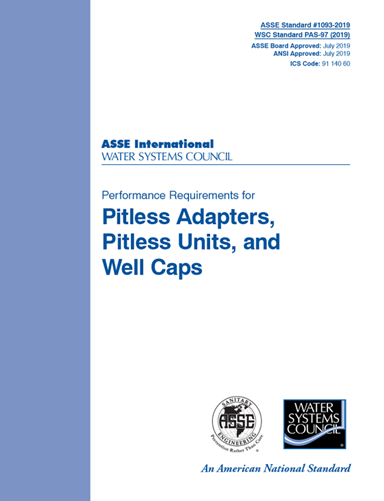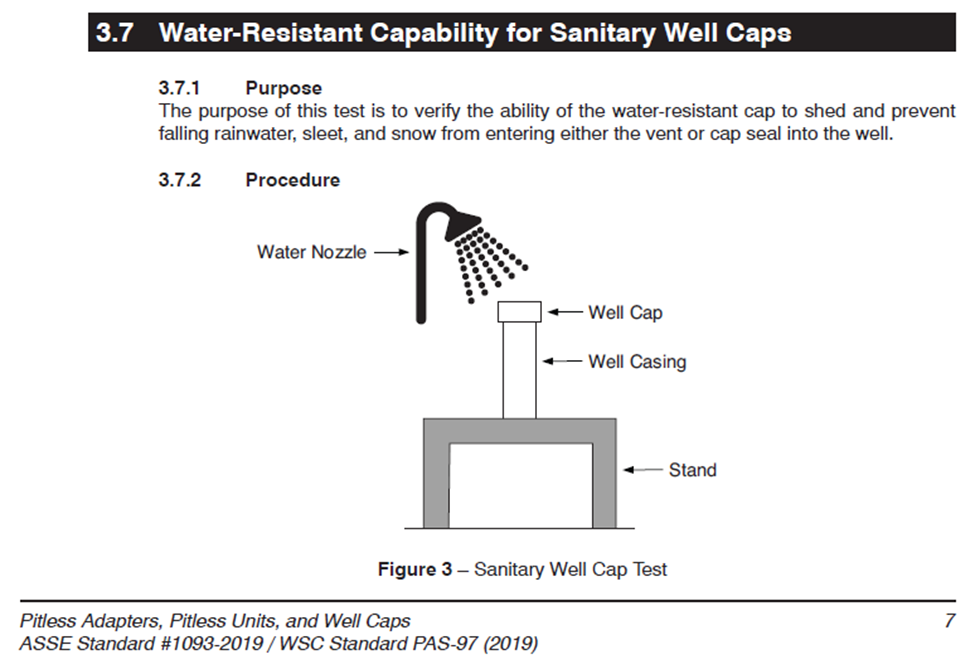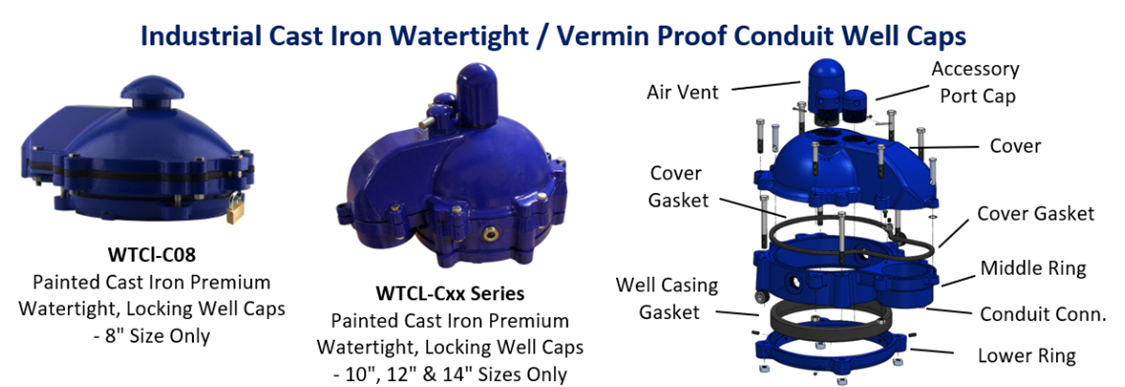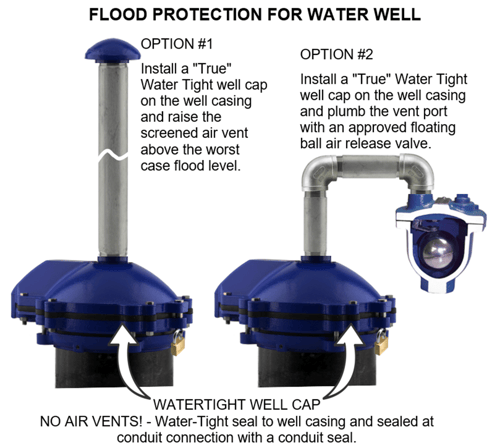Is a “water-tight” well cap watertight?
Is a “water-tight” well cap watertight?
 The answer is yes when strictly looked at from the perspective of the well cap standard “ASSE Standard #1093-2019/WSC Standard PAS-97 (2019) PAS-97”. The term “water-tight” actually means water resistant. Therefore, the well caps are actually “rain proof”, which would be a more appropriate description.
The answer is yes when strictly looked at from the perspective of the well cap standard “ASSE Standard #1093-2019/WSC Standard PAS-97 (2019) PAS-97”. The term “water-tight” actually means water resistant. Therefore, the well caps are actually “rain proof”, which would be a more appropriate description.
However, the “water-tight” description is a little misleading and causes confusion. This is because the well caps are vented to the atmosphere in order to allow air into the well. When the water level is getting drawn down in the pumping cycle, air is able to enter. When the well is replenishing up to the static water level, it needs to be able to expel air out. This also ensures air can enter or exit to prevent excess pressure or a vacuum if the atmospheric pressure changes. If the well caps were watertight this would not be able to take place.
This brings up the question: Are there watertight well caps? Yes, this is covered later on in the article.
TERMINOLOGY:
Boshart has advocated for a name change from watertight to a more accurate description such as “vermin proof” or “rain-proof”. This would indicate that the caps meet the 3.6 Vermin and Contaminant/Pollutant Resistance and Venting section of the ASSE Standard #1093-2019/WSC Standard PAS-97 (2019). However, this request was not adopted by the committee and the “watertight” terminology remains in place for vented well caps to this day.
In the past, Boshart sold the caps as “vermin proof” well caps for many years. However, using this terminology caused confusion for customers as they believed that competitors watertight well caps were superior. This simply was not the case and so Boshart adopted the industry wide watertight description so that well caps would be compared as apples to apples, so to speak.
WELL CAP STANDARD CHANGE:
 In 2019 ASSE Standard #1093-2019/WSC Standard PAS-97 (2019) was modified to simplify water-resistance testing for sanitary well caps. The test procedure simulates a "rain proof test” which was more appropriate for well caps that have screened air vents. This revision replaced the previous “watertight test" in which the vents had to be sealed off and the well casing/well caps were pressurized to ensure no water could gain access to the well.
In 2019 ASSE Standard #1093-2019/WSC Standard PAS-97 (2019) was modified to simplify water-resistance testing for sanitary well caps. The test procedure simulates a "rain proof test” which was more appropriate for well caps that have screened air vents. This revision replaced the previous “watertight test" in which the vents had to be sealed off and the well casing/well caps were pressurized to ensure no water could gain access to the well.
The current test as defined in 3.7 of ASSE Standard #1093-2019/WSC Standard PAS-97 (2019) is copied below.

What is a TRUE watertight well cap?
 A true watertight cap would require that the well cap does not have any venting. In this case, the vent is equipped with either a riser pipe to a screened air vent above the maximum flood level or that a float ball air valve is plumbed to the well cap vent port. The floating ball rises with the flood water and shuts off the air passage in the event flood waters rise above the air inlet/outlet at the well head.
A true watertight cap would require that the well cap does not have any venting. In this case, the vent is equipped with either a riser pipe to a screened air vent above the maximum flood level or that a float ball air valve is plumbed to the well cap vent port. The floating ball rises with the flood water and shuts off the air passage in the event flood waters rise above the air inlet/outlet at the well head.

 WARNING: Water well construction codes vary depending on the area you live, and it is very important that you adhere to all applicable national and local well construction codes when venting well caps in flood zone areas.
WARNING: Water well construction codes vary depending on the area you live, and it is very important that you adhere to all applicable national and local well construction codes when venting well caps in flood zone areas.
Additional Resources:
https://support.boshart.com/how-do-i-identify-a-well-cap-model-number-for-replacement-parts
https://support.boshart.com/how-do-i-install-a-wtc-series-water-tight-well-cap
https://support.boshart.com/how-do-i-install-a-wtcc-series-well-cap
https://support.boshart.com/what-is-the-function-of-each-well-water-pressure-system-component
